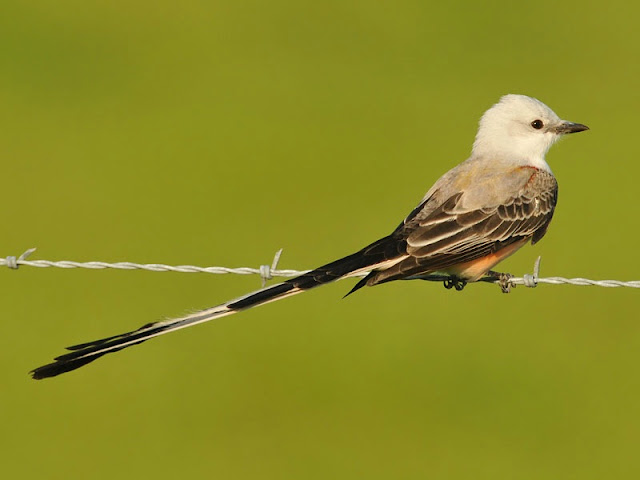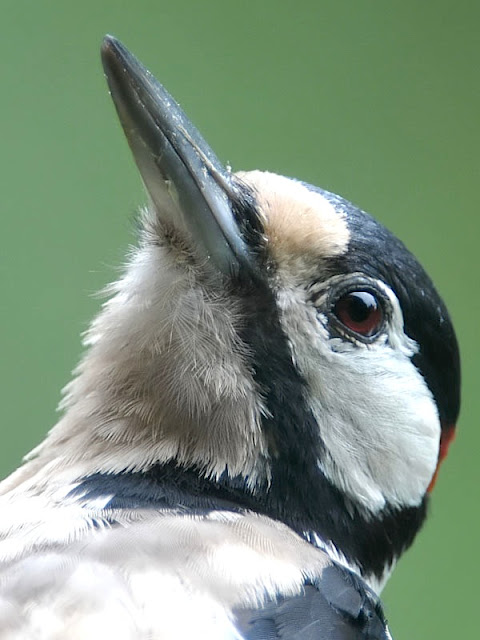The
Haweswater Hotel by the side of the lake is magic. It’s the only building along the length of the lake and must
be one of the most tranquil places to stay in the whole of the Lake
District. Built in 1937, the
interior is pure Art Deco, with most of the original features intact. That said it’s the outside that
impresses most. On a rare
beautiful sunny day and with not a breath of wind, we sit in the garden
overlooking the steep-sided valley drinking in the peace. Blackcaps sing from the wooded slope
behind, House Martins feed young in nests beneath the roof of the hotel and Chaffinches fly back and forth taking peanuts from the
bird tables. But it’s the Red
Squirrels that provide the real magic.
So tame but yet so wild, they too come for the peanuts, sitting in
classic Squirrel Nutkin poses on the lawn just a couple of yards from the excited
guests. There’s a Golden Eagle in the valley behind the hotel, which may be the
only one in England, but it’s impossible to leave the squirrels that for me define
a part of wild England now mostly gone. They strengthen my resolve to campaign
for the culling of Grey Squirrels.
Saturday, 23 June 2012
Thursday, 14 June 2012
Scissor-tailed Flycatcher
Scissor-tailed Flycatchers are common in southern Texas. This first sighting during our recent spring trip to Texas took our breath away. Their beauty and elegance never failed to make us stop and marvel. If only we had such a bird on this side of the Atlantic!
Tuesday, 5 June 2012
Privilege
Out very early this morning I turn a corner along a
deserted woodland path. In an instant I’m frozen to the spot. In one of those
rare magic countryside moments there, only twenty or so yards away in the
middle of the path, are two fox cubs at play completely oblivious of my
presence. In the dappled morning sunlight I watch, spellbound for what seems
like an age; they get my scent and are off. What a privilege to get so close to
such a timid and beautiful wild animal. I shared a similar moment on
a woodland track at the Blackwater Wildlife Refuge in Maryland last year. This
time the fox was tame, very tame, staring us out before slinking off into the
field. Such moments stay in the memory.
Foxes in Britain have spread
into urban areas in recent decades and are now very common in city centres. Unlike their wild cousins these urban foxes are bold, often very tame and can often
be seen in daylight. They make dens under garden sheds and other buildings,
even occasionally underneath the floors of houses. We put out scraps for our
foxes most evenings and when I can accept the carbon guilt, I turn on the light
by the old willow tree. We’re delighted to see them wandering around the garden
after dark ignoring the hedgehogs, but always noticing the neighbourhood cats.
I move on, recording every bird
I hear or see. This mixed woodland
contains no rarities, just common species, but it holds a good population
of woodpeckers. I’m sure there are Lesser-spotted Woodpeckers here, I hear them
from time to time, but all I detect today are Great-spotted. I’m always green
with envy when visiting my friend Colin’s garden in Annapolis. Woodpeckers abound at any
time of the year; Downy, Hairy and Red-bellied visit his bird table and in the
summer months there’s often a Yellow-bellied Sapsucker too, not to mention the Flickers in the adjacent woodland. I can’t compete, but whatever I find in the countryside is beautiful, wherever I am.
Saturday, 2 June 2012
Avocets
There are four kinds of Avocets in the world, but I’m only
familiar with the European and American species. Below are photographs, which show some differences between
the two species. The first
four photographs are European (Pied) Avocets and were taken in the UK, the American
Avocet photographs were all shot on the Bolivar Peninsula, Texas in April 2012.
Subscribe to:
Comments (Atom)

















